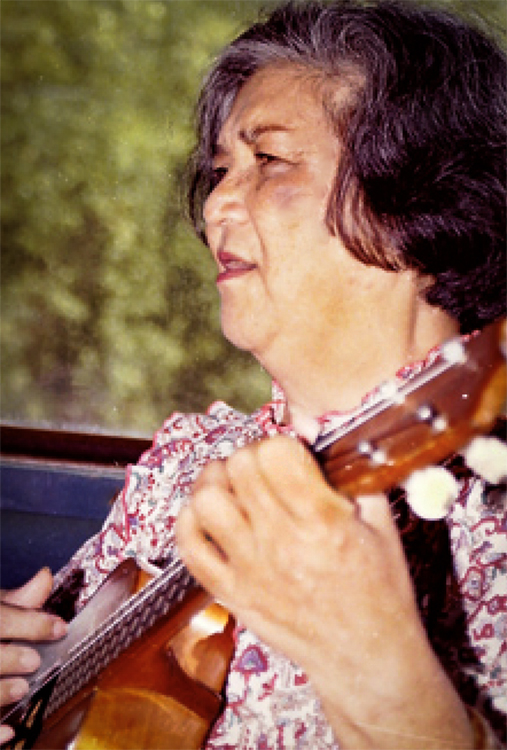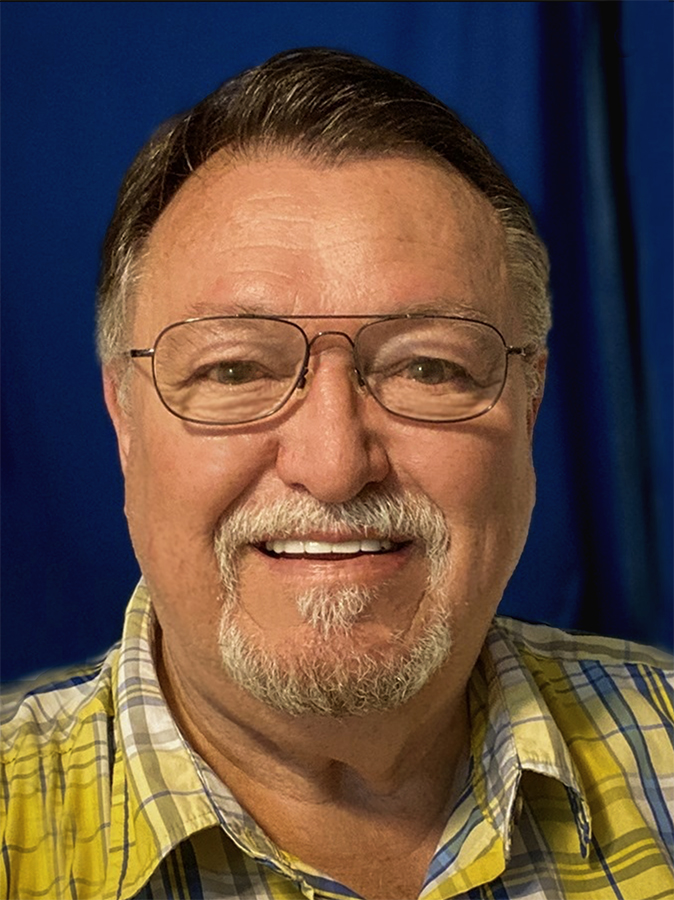[Excerpted from the September 30, 1988 issue of UPDATE, the PCC’s newsletter; reprinted in pcc50.com, March 15, 2013.
BJ, as almost everyone called her, was also a Hawaiian musician and worked at CCH/BYU–Hawaii for years.]

Fuller’s PCC career: In 1963 there were only three cashiers, and not all worked at the same time.
The Center opened its first ticket office and front desk in the Hauula-end of the [former] Village Operations building. Administration, PR and Business Offices occupied the Kahuku-end of the building.
Fuller described pre-sale tickets for Polynesian Panorama, PCC’s first night show, as far from being “brisk.”
The travel people were skeptics, who not only denied the Center from entering the tourist trade but denied the “Mormons” the opportunity to share their Polynesian culture in public.
Students went from hotel to hotel in Waikiki to sell PCC tickets. Some of the students even stood on corners to sell tickets.
The day after opening night, daily newspapers wrote nothing but good things about the show. That same day, hundreds and hundreds of people were at the Polynesian Cultural Center, the line snaking out of the building.
Inside the modest ticket counter, people stood four abreast with only two cashiers on duty, clamoring for tickets. The tickets were selling for $1 each.
Whenever a busload of visitors arrived, all the guides went outside to the gate to greet them. One particular male guide went so far as to help the people off the bus.
Back in those days, before Laniloa Lodge [Laie Inn] was built [and subsequently replaced decades later by the Marriott Courtyard Hotel], the whole area was the parking lot, so the buses drove right up to the gate.
When two busloads arrived, there was jubilation among all the workers in the Center. The guides had small groups of people to escort around the grounds, so the tours were very personal.
In a very short while, the ticket office moved to the building that is now the Museum [since demolished to make way for the new Samoan chief’s house].
Before the plants grew high and bushy enough, the wind and the rain took to giving the cashiers a bad time in the new building. Many times, cash registers had to be moved to a dry corner of the counter.
Fuller also recalled that while the Polynesian Cultural Center was being built by labor missionaries, the local [Latter-day] Saints contributed some of their time to help with the construction by gathering dried cane leaves from the fields around Laie, for thatching the huts in the Center.
The Laie Stake Relief Society made breakfast every morning for the workers.
A Samoan Sister, Penina Meatoga, with her harmonica, made the modest kitchen in the Old Laie Chapel ring with music during those early mornings. Sometimes, a sister would do a jig, bringing laughter to all. Many of the sisters, including Penina, have since passed away.
The Polynesian Cultural Center’s first choreographer, Jack Regas, who was well known in Hollywood, became a Mormon through his affiliation with the students in the night show.
B.J. Fuller was one of the original Polynesian Cultural Center cashiers.
Michael Westmore (of the famous Westmore family), who came to do special makeup for Te Aroha Nui dance group from New Zealand, was ready to become a Mormon through the same affiliation as Jack Regas.
Westmore won an Oscar for make-up in the movie Mask. Actress Larraine Day and her husband, Mike Grilikhes, named their first daughter Te Aroha Nui, after the New Zealand group.
The “frosting” of the cake: It is said among the pioneers who once operated the many phases of the Center that the new generation of workers is now enjoying the “frosting” of the cake.
However, the pioneers worked for the pure pleasure of just being in an atmosphere that permeated with much aloha. Some just never quit working after punching out, but hung around the Center to give an extra hand wherever and whenever needed.
It was a joy to be in the company of fellow workers who worked hard and long to make the Polynesian Cultural Center a success. For many of us who are PCC alumni, we are not only seeing the fruits of our labors but also enjoying the “frosting” on the cake.

[Excerpted from the September 30, 1988 issue of UPDATE, the PCC’s newsletter; reprinted in pcc50.com, March 15, 2013.
BJ, as almost everyone called her, was also a Hawaiian musician and worked at CCH/BYU–Hawaii for years.]

Fuller’s PCC career: In 1963 there were only three cashiers, and not all worked at the same time.
The Center opened its first ticket office and front desk in the Hauula-end of the [former] Village Operations building. Administration, PR and Business Offices occupied the Kahuku-end of the building.
Fuller described pre-sale tickets for Polynesian Panorama, PCC’s first night show, as far from being “brisk.”
The travel people were skeptics, who not only denied the Center from entering the tourist trade but denied the “Mormons” the opportunity to share their Polynesian culture in public.
Students went from hotel to hotel in Waikiki to sell PCC tickets. Some of the students even stood on corners to sell tickets.
The day after opening night, daily newspapers wrote nothing but good things about the show. That same day, hundreds and hundreds of people were at the Polynesian Cultural Center, the line snaking out of the building.
Inside the modest ticket counter, people stood four abreast with only two cashiers on duty, clamoring for tickets. The tickets were selling for $1 each.
Whenever a busload of visitors arrived, all the guides went outside to the gate to greet them. One particular male guide went so far as to help the people off the bus.
Back in those days, before Laniloa Lodge [Laie Inn] was built [and subsequently replaced decades later by the Marriott Courtyard Hotel], the whole area was the parking lot, so the buses drove right up to the gate.
When two busloads arrived, there was jubilation among all the workers in the Center. The guides had small groups of people to escort around the grounds, so the tours were very personal.
In a very short while, the ticket office moved to the building that is now the Museum [since demolished to make way for the new Samoan chief’s house].
Before the plants grew high and bushy enough, the wind and the rain took to giving the cashiers a bad time in the new building. Many times, cash registers had to be moved to a dry corner of the counter.
Fuller also recalled that while the Polynesian Cultural Center was being built by labor missionaries, the local [Latter-day] Saints contributed some of their time to help with the construction by gathering dried cane leaves from the fields around Laie, for thatching the huts in the Center.
The Laie Stake Relief Society made breakfast every morning for the workers.
A Samoan Sister, Penina Meatoga, with her harmonica, made the modest kitchen in the Old Laie Chapel ring with music during those early mornings. Sometimes, a sister would do a jig, bringing laughter to all. Many of the sisters, including Penina, have since passed away.
The Polynesian Cultural Center’s first choreographer, Jack Regas, who was well known in Hollywood, became a Mormon through his affiliation with the students in the night show.
B.J. Fuller was one of the original Polynesian Cultural Center cashiers.
Michael Westmore (of the famous Westmore family), who came to do special makeup for Te Aroha Nui dance group from New Zealand, was ready to become a Mormon through the same affiliation as Jack Regas.
Westmore won an Oscar for make-up in the movie Mask. Actress Larraine Day and her husband, Mike Grilikhes, named their first daughter Te Aroha Nui, after the New Zealand group.
The “frosting” of the cake: It is said among the pioneers who once operated the many phases of the Center that the new generation of workers is now enjoying the “frosting” of the cake.
However, the pioneers worked for the pure pleasure of just being in an atmosphere that permeated with much aloha. Some just never quit working after punching out, but hung around the Center to give an extra hand wherever and whenever needed.
It was a joy to be in the company of fellow workers who worked hard and long to make the Polynesian Cultural Center a success. For many of us who are PCC alumni, we are not only seeing the fruits of our labors but also enjoying the “frosting” on the cake.
